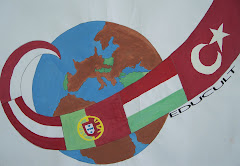 Saint Nicholas
Saint Nicholas Early in the Advent season celebrate a feast that has been popular for centuries in Christian countries, especially in Northern Europe. In our over-commercialized society, this holiday gives us a good "teaching moment" to remind children that Jolly Santa Claus, is, in fact, Saint Nicholas, a fourth century bishop of the city of Myra in what is now Turkey.
Saint Nicholas was renowned for his great kindness and his generous aid to those in distress. Among the kind and miraculous acts attributed to him are saving three young girls from shame by secretly providing them with dowries, raising three murdered boys from the dead, and saving sailors caught in stormy seas. For these reasons, he is considered the patron saint of children, unmarried girls, and sailors, among others.
Traditional celebrations of Saint Nicholas Day in Northern Europe included gifts left in children's shoes (the origin of our American Christmas stockings). Good children receive treats - candies, cookies, apples and nuts, while naughty children receive switches or lumps of coal.
Today, in Hungary, children still put a shoe outside their bedroom doors on the eve of Saint Nicholas Day, and expect to find candy or small gifts in their shoe on December 6th.
In some households the father of the family may dress up as Saint Nicholas on the eve of his feast. He comes in, sometimes with his sidekick, Krampus, and helps each child examine his conscience. He admonishes the bad and rewards the good. If your family enjoys theatrics, this is a wonderful opportunity early in Advent to inspire children to amend their ways in preparation for the coming King.
























